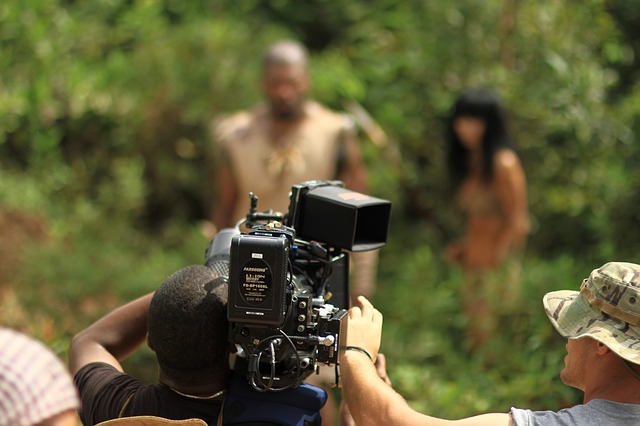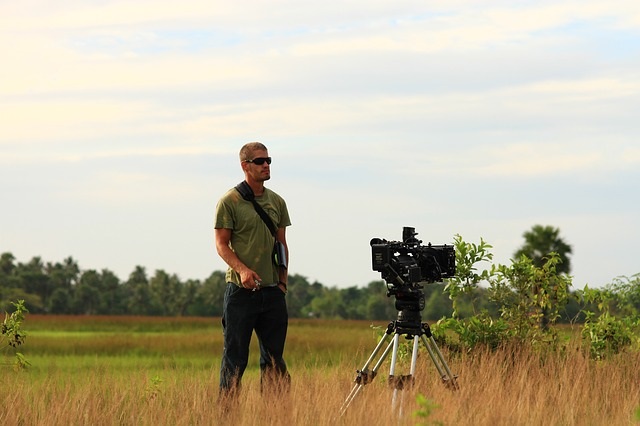 Anyone who has watched the credits roll after a movie knows how many people it can take to make a film.
Anyone who has watched the credits roll after a movie knows how many people it can take to make a film.
There are lots and lots of different jobs, and the bigger and more complicated the film, the more people work on it to bring it all together.
The actual filming (or shooting) takes place in what is called a location. This can be in a movie studio on a movie set especially constructed for filming, or it can be anywhere that suits the film being made. Film producers look for the best, most cost effective way to make the movie look the way the director wants it to look.
When you watch a film, you see the actors (male and female). What you don't see are all the people working behind the scenes on location while the film is being shot. Here are some of the jobs that they do to bring you movie magic.
Director
The director is the most senior person on location, and looks after the creative side of making a film. He or she is in charge of how the film's story is told - imagining how the film will look and sound, and then working to make it happen. Working with a screen play that tells the story, the director decides on the types of locations where scenes should be filmed, directs the actors, and chooses the best type of lighting, sound and music to make his or her vision come to life on the screen.
Some movies have a second unit to film minor scenes or stunt sequences, or to shoot in far away locations. This speeds up making the movie because more than one scene can be filmed at a time. Additional units have their own directors, named after the number of their units, such as the second unit director.
There also can be several different assistant directors.
The first assistant director helps the director and the production manager, managing the schedule for everyone on location. The 1st AD needs to make sure that everything is running smoothly so that things happen on time and don't cost more than expected, while keeping everyone on location happy.
The second assistant director assists the first, and so on.
Sometimes assistant directors are asked to direct crowd or background scenes, or film minor scenes in the movie.
Director of Photography
Often called the DoP, the director of photography is the second most senior person on location. He or she is in charge of the camera and the lighting crew. The director lets the DoP know how the shot should look, and the DoP works out how to technically make it happen.

Camera Operators
The camera operator is the person who uses the camera to film scenes.
Each camera is set up by a focus puller, who keeps the camera in focus as it is running and is responsible for threading film into the camera.
The clapper loader looks after the equipment, loads film or video into the camera between takes, records details of the film processing, and operates the clapper board.
Now that a lot of films are made digitally, a digital imaging technician looks after the digital camera and sets it up for filming.
Lighting Operators
The head of the lighting department, responsible for planning the lighting for a film, is called the gaffer.
Lighting technicians set up the lighting equipment and control it during filming.
Grips
Grips help with lighting and camera set up, and do most of the heaving lifting of equipment. The key grip works with the DoP to make sure that the lighting is correct. The key grip's assistant is called the best boy (grips), and is also responsible for looking after the grips truck. There are also grips to look after the camera cranes and moveable camera carts (called dollies) which travel on tracks.
Sound Operators
On location, the head of the sound department is called the production sound mixer. He or she looks after recording all the sound needed during the actual filming process. The production sound mixer chooses and operates the recording and mixing equipment.
The boom is a pole with a microphone on the end. The boom operator holds the boom and its microphone close to the actors, above or below them, but hidden from the camera. He or she also makes sure that any microphone used is in the right place for the scene, even if microphones have to move during filming.
NEXT: More special people you'll find behind the scenes on a film shoot >